Ten Things Landowners in Texas Need to Know
1. Know Your Space
Text:
It is impossible to manage your property for its maximum benefit without knowing the features that play a role in land management. This list contains some key areas of a property which require attention:
- boundary lines
- fences
- pastures
- wetlands
- gates
- roads
- rain gauges
- blinds/feeders
- wildlife shelters
Link: Texas Forest Service – Map My Property
The Texas A&M Forest Service recently created a "Map My Property" tool which allows you to create a personalized map of your property by drawing boundary lines, fences, roads, and landmarks. This can be helpful to visualize key property features and the resources you have to manage.
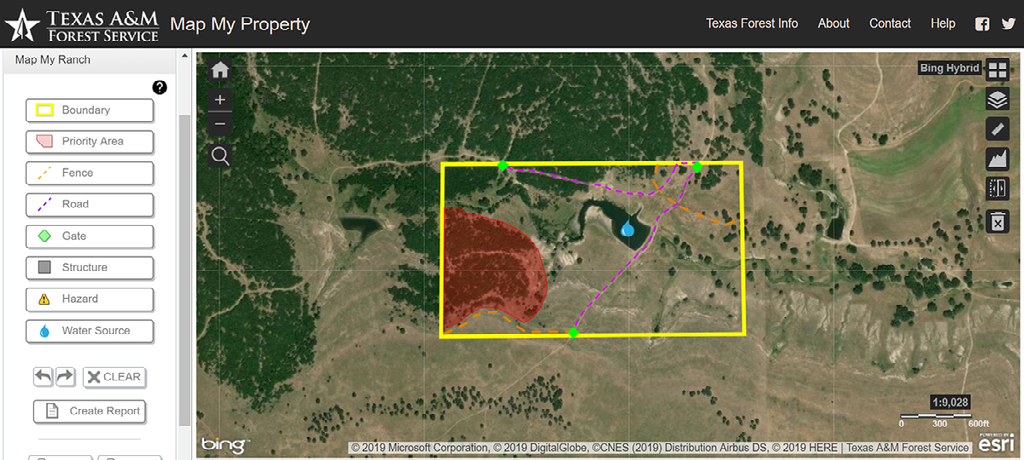
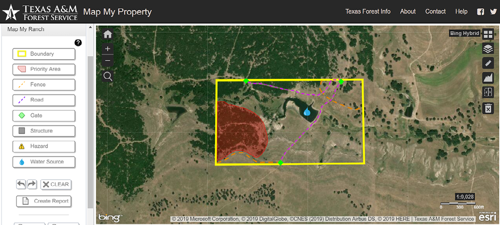
Above: Screenshot of Texas A&M Forest Service's Map My Property Tool
Background Image Description:
A prickly pear cactus among grass. Taken by Abigail Holmes.
2. Know Your Soils
Text:
Soil influences every other component of wildlife habitat (including food, shelter, water, and space). This key aspect of the land will determine the productivity of an area. The Natural Resources Conservation Service (NRCS) developed the Web Soil Survey - an online mapping tool which allows you to locate your property and access extensive descriptions of its soil structure. The first article in our "Resources for New Landowners" series provides step-by-step tutorials on using this resource to better understand your soil structure.
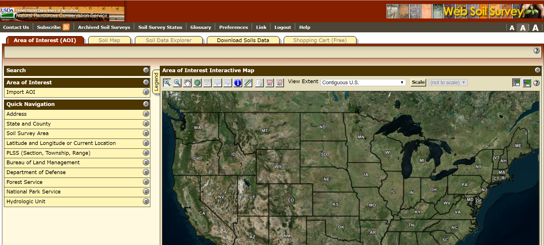
Above: Screenshot of the NRCS Web Soil Survey Tool
Link: Blog: Resources for New Landowners: Soil Management
Link: NRCS Web Soil Survey
Background Image Description:
Detailed image of soil, titled "dirt soil potting," taken by "snarlingbunny" on Adobe Spark.
3. Know Your Plants
Text:
Healthy soils invariably contribute to the growth of healthy vegetation. The resources below, in addition to the Web Soil Survey mentioned above, are all excellent sources of information about plant identification and/or management tips:
- Texas A&M AgriLife Herbarium - ID information for native Texas species found throughout the Hill Country and South Texas Plains.
- Noble Research Institute Plant Image Gallery - Extensive photo gallery and search engine to assist in plant identification.
- Range Plants of North Central Texas - Provides 1,450 photos, focused on leaves, flowers, fruits, and smaller details that can aid in plant identification.
- iNaturalist - A citizen science app where users can get help with species identification and contribute scientific data.
- Texas A&M NRI Quail Plant of the Week YouTube Playlist - A series of short videos covering quail-friendly plants and their unique features.
- Know Your Grasses - A publication focused on both native and introduced grasses in Texas featuring detailed line drawings of each species.
Ex: Deer Diets
Increasing plant biodiversity is a primary goal of wildlife managers. One of the most important utilities of the vegetation on your land is food for wildlife. However, if you are attempting to manage your land for multiple species, it can be difficult to balance the needs of each species. Generalists such as white-tailed deer can make this problem a little simpler for landowners; they will eat different proportions of vegetation types depending on what is present on the tract of land. Often, managing land for a generalist species is beneficial to many other animals; a wide variety of plants provide a little something for everyone.
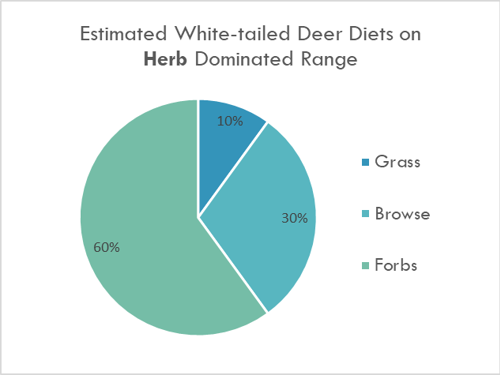
When white-tailed deer live on range dominated by herbs, their diet will be made up of an average of around 60% forb species such as evening primrose, winecup, bloodberry, and dayflower.
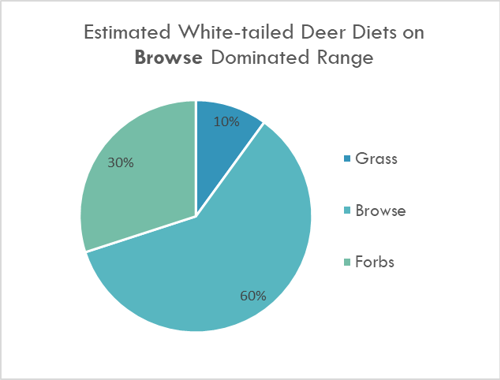
In contrast, when they live on range dominated by browse, these trees and shrubs will make up the majority (about 60%) of their diet. The makeup of their diet will change depending on the vegetation community of their range.
Background Image Description:
Photo of a partially blooming American Basketflower. Taken by Abigail Holmes.
4. Know Your Animals
Text:
Having a diverse plant community could increase the number of different wildlife species on your property. Creating species lists and monitoring the time of arrival for migrant species can help your awareness of the wildlife present in the area and make future management decisions much more simple. There are countless resources to help you identify the critters on your land by their appearance, calls, tracks, distribution, and life history. Some of our favorite resources include:
- Texas A&M AgriLife Extension Wildlife Resources
- iNaturalist
- The Cornell Lab of Ornithology: All About Birds & the Merlin Bird ID App - These avian resources provide life history information, samples of bird calls, and key identifiers for bird species found throughout North America.
- TPWD Wildlife Fact Sheets - Detailed pages filled with information on the visual description, life history, and distribution of native Texas species.
- Texas Wildlife Identification Guide - A guide focused on the identification of native and exotic species in Texas, especially game species and fur-bearing animals.
- Nature Tracking - Provides photo galleries of North American animal tracks and helpful tips on how to identify species from the marks they leave behind.
Background Image Description:
A white-tailed deer antler resting on the ground. Taken by Brittany Wegner.
5. Know Aldo Leopold’s Tools of Wildlife Management
Text:
Axe: This includes all aspects of mechanical and chemical brush management. Physically removing or altering brush allows a higher diversity of plants to thrive and attract more wildlife species.
Cow: Proper levels of grazing and livestock rotation over time can encourage a healthy vegetation community.
Plow: Tilling soil to create disturbance encourages herbaceous growth for locally-adapted species. If needed, seeding recently disturbed areas with native species can create "food plots" which provide a year-round source of food for wildlife.
Fire: Prescribed burning increases land health in several ways. This can include nutrient cycling and moisture filtration into soil, which often lead to increased levels of biodiversity.
Gun: Population management can be beneficial when species such as white-tailed deer begin to exceed the carrying capacity of the land.
Background Image Description:
A cow grazing next to a calf in a field. Taken by Brittany Wegner.
6. Know When to Take Action
Text:
Outline a plan for your property: which management techniques you will utilize and how/when you will implement them.
Make sure you carry out each technique at the proper time of year - utilize these calendars to better understand the timing of habitat management:
- Wildlife & Fish Management Calendar for Texas and the Southeast
- Northern Bobwhite Management Calendar
- White-tailed Deer Management Calendar
- Texas Farm Pond Management Calendar
Background Image Description:
A large rocky area with ferns and prickly pear cactus growing. Taken by Brittany Wegner.
7. Know What Good Habitat Looks Like
Text:
Different cover types for wildlife include nesting, loafing, escape, and thermal cover. Land management should be focused on the "weakest habitat link" before moving to new goals. Is your property lacking in any of the main cover types? The following photos show different quality nesting habitats for ground-nesting birds, so you can compare just how much variation there is between poor and excellent habitat features.
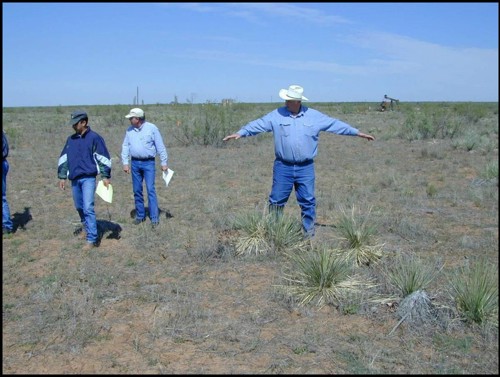
Poor Nesting Cover – low species diversity, primarily bare ground
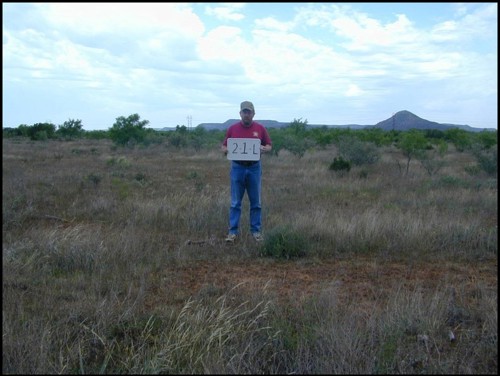
Fair Nesting Cover - some cover present, but minimal species diversity and some bare ground

Good Nesting Cover - high species diversity, multiple types and sizes of cover
Habitat photos provided by Dr. Dale Rollins.
8. Know How to Measure Success
Text:
After a lot of time, energy, and financial input into making beneficial changes on your land, it is crucial to be able to measure if your efforts were successful. This list encompasses the main elements which can show the success of management efforts:
- Species Diversity Lists - What plant and animal species are present? How many species are there?
- Population Sizes - Are overall population sizes of desired species increasing rather than decreasing?
- Sex Ratios - Does your land support a balanced sex ratio for most species present?
- Offspring - What is the ratio of juveniles (young) to adults?
- Cover - Is there an increase in quality and/or quantity of wildlife cover?
- Resource Use - Are wildlife species utilizing the resources you have provided (e.g. habitat, nest boxes, feeders)?
- Harvest Data - Has harvest of game species on the land increased?
Background Photo Description:
A close-up image of yellowed grass. Taken by Abigail Holmes.
9. Know Your Neighbors
Text:
Cooperation among neighbors is one of the most effective ways to manage smaller properties consistently. Benefits of knowing and communicating with your neighbors can include:
- Tracts of land will be maintained under the same general management goals.
- One wildlife biologist can work with a group of neighbors and assist in creating cohesive and complementary land management plans.
- The effects of fragmentation will be lessened by maintaining the same types and quality of habitat across tracts of land.
Background Photo Description:
Landowners standing in a field listening to a natural resource professional. Taken by Abigail Holmes.
10. Know What is on the Horizon
Text:
Texas is continually changing; as the state's population and urban areas continually expand, are you prepared for the ways in which this might impact your property or local area?
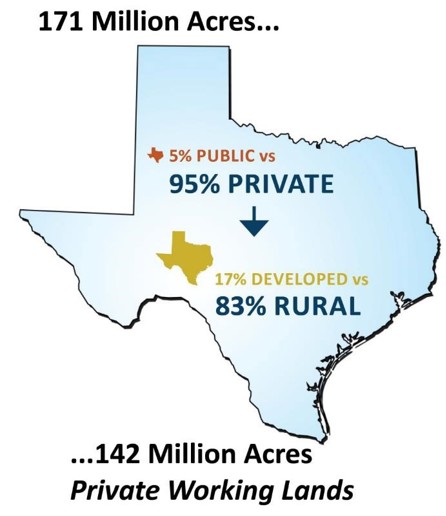
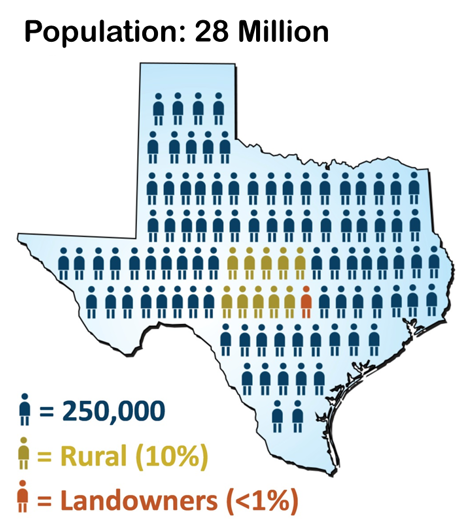
If you found this lesson helpful, please take a minute to fill out this survey. Your response will help us make future lessons even better to benefit landowners and wildlife managers.
If you found this lesson helpful, please take a minute to fill out this survey. Your response will help us make future lessons even better to benefit landowners and wildlife managers.


